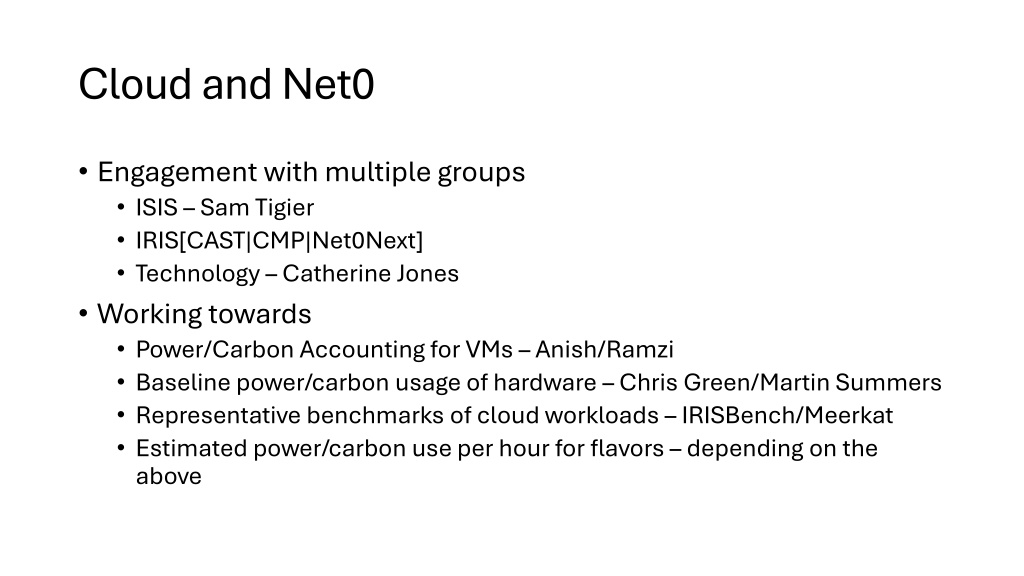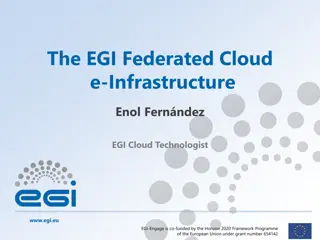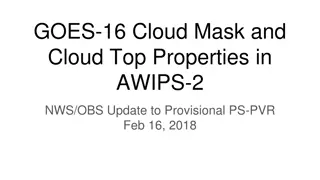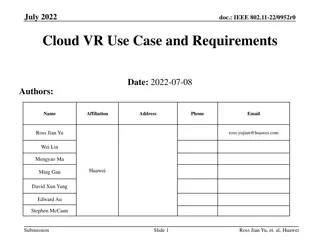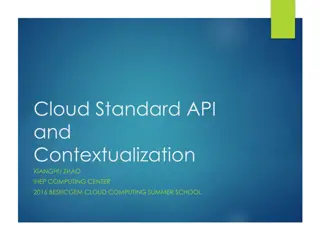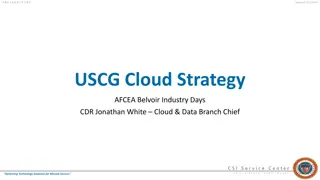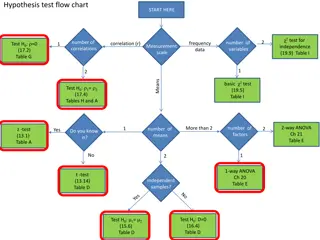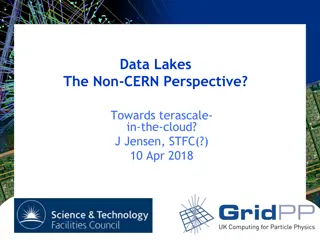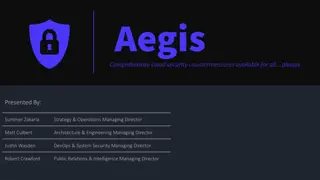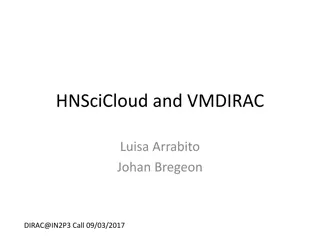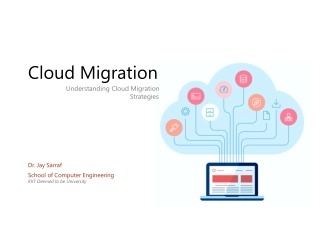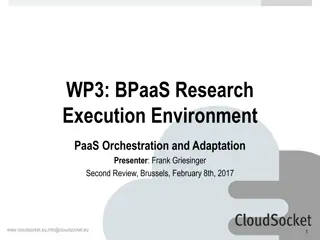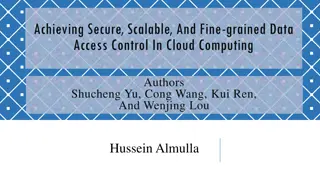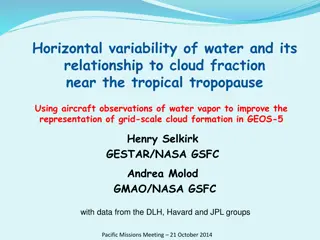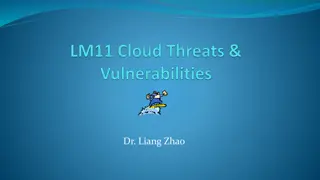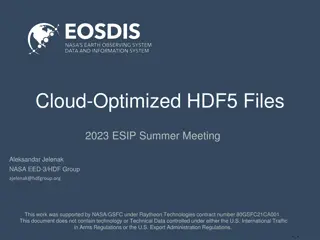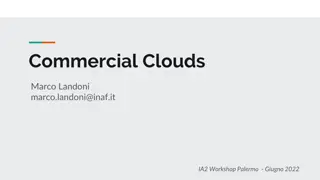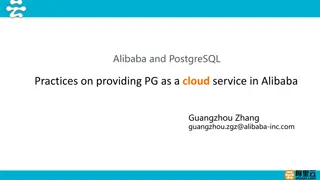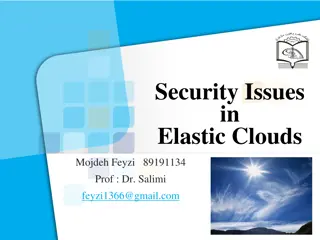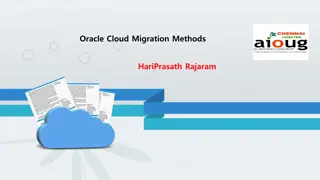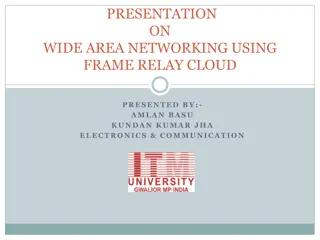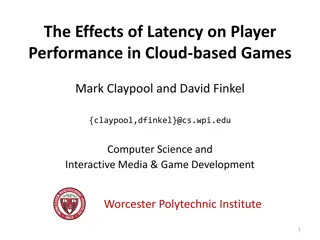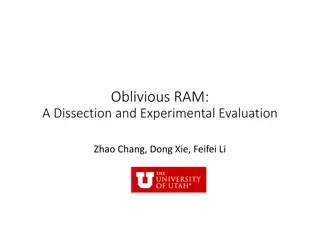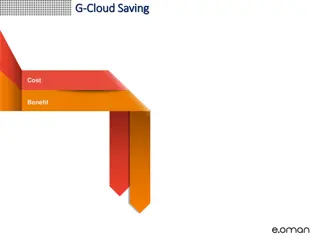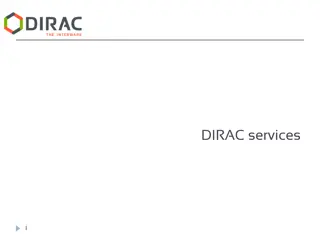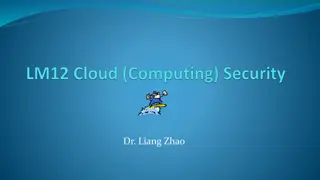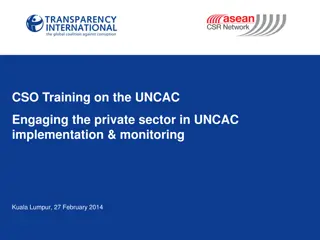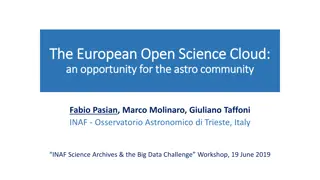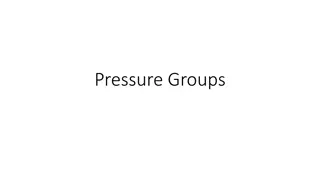Cloud and Net0 Engagement with Multiple Groups
This content discusses the engagement of Cloud and Net0 with various groups to work on power and carbon accounting for virtual machines. It covers past reports on power footprint, current efforts on power optimization, monitoring of physical and virtual machines' power usage, and the ongoing work on power data collection for hypervisors. The content emphasizes the importance of understanding power consumption in cloud environments and the initiatives taken to monitor and optimize it effectively.
Download Presentation

Please find below an Image/Link to download the presentation.
The content on the website is provided AS IS for your information and personal use only. It may not be sold, licensed, or shared on other websites without obtaining consent from the author. Download presentation by click this link. If you encounter any issues during the download, it is possible that the publisher has removed the file from their server.
E N D
Presentation Transcript
Cloud and Net0 Engagement with multiple groups ISIS Sam Tigier IRIS[CAST|CMP|Net0Next] Technology Catherine Jones Working towards Power/Carbon Accounting for VMs Anish/Ramzi Baseline power/carbon usage of hardware Chris Green/Martin Summers Representative benchmarks of cloud workloads IRISBench/Meerkat Estimated power/carbon use per hour for flavors depending on the above
Cloud and Net0 past , present and future So far: Cloud did a power footprint report back in November 2022 to help with rack placement of new kit for Operations staff. Report was a rack by rack snapshot based on what the systems in the rack said they were using. A significant % Racks of kit were not in production yet, and some were decommissioning: many new racks over in R26.(racks have a 7KW power footprint) Conclusion then: Cloud power usage is patchy much more so than Grid compute. Today: Users want to know how much power each flavor in the cloud consumes maximum, average etc. Chris Green has been working on benchmarks for the compute cloud systems to give some figures and is working on a report. Chris is currently working on tests to put in power optimization changes in the BIOS of hypervisors, then running the same benchmarks expecting a report on how the power optimization affects the time and compute figures as well as the power footprint.
Monitoring the Clouds Physical and Virtual Machines We've been monitoring long-term cloud hardware power usage for around 1.5 years now using the same pipeline we developed as part of the IRISCAST (IRIS Carbon Auditing SnapshoT) work. We've recently started using prometheus as the primary source of metric collection within the cloud, with a wide variety of exporters available, it makes it possible to collect and monitor thousands of metrics including power usage. With the collection of this volume of metrics the cloud has also needed to implement a robust and efficient storage solution, that being victoria-metrics which will be used to store a set of 'hot' data. Prometheus Exporters: libvirtexporter for vm utilisation node-exporter for physical machine power metrics (currently some generations of machines only) Victoria-Metrics TSDB Storinglive data
Continuing IRISCAST Work... Diagram shows how our current power collection data pipeline works on over 700 hypervisors and control plane nodes
Continuing IRISCAST Work... Data for all STFC Cloud hypervisors is being actively collected and stored in the Opensearch cluster Stephano at 15 minute intervals
Collecting Hardware Power Usage using Prometheus Query = node_hwmon_power_average_watt Table shows the power for some of the Hypervisors, data being stored for 30 days on the live VM (Example data)
Collecting Hardware Power Usage using Prometheus Query = libvirt_domain_info_virtual_cpus Table shows the latest virtual core count for some of the cloud hypervisors (Arbitrary data)
Cloud and Net0 past , present and future2 Future:- We need to get much better about how we manage bringing new equipment online and making it available to cloud community, as well as how we take old equipment offline. We should profile hardware and our flavor offerings and image/ VM lifecycle around use cases where we know we can save power on: I.e Virtual desktop / user interactive systems, rather than compute Better preening tools to check where high value / high power footprint equipment has non-productive or non-working systems that have failed on equipment: and to fix / move the workload to a better fit equipment resource. Better policies to clean up orphaned VM resource. Better reporting and accounting: Be able to give end user organisation a picture of their power resource usage based on what they have consumed in the cloud.
